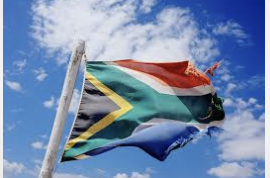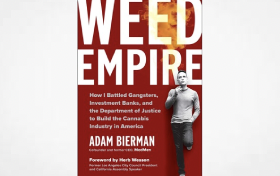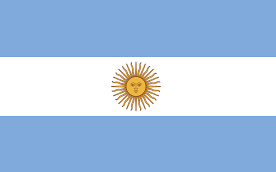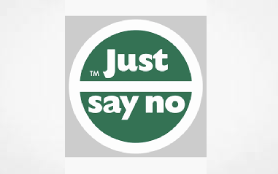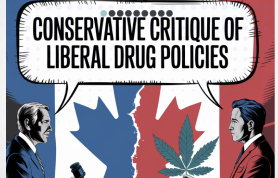25 December 2024
The ‘grey zone’ domestic cannabis retail market has exploded in 2024 has left regulators trailing in the dust. Although the sale of cannabis illegal unless it’s prescribed under Section 21 of the Medicines Act, thousands of ‘informal’ traders have brazenly opened shop across South Africa’s, selling cannabis flower and a host of related THC and CBD products.
he rapid rise of ‘grey zone’ cannabis outlets is entirely against the law, but it’s happening anyway at a scale that’s breath-taking. This new informal sub-sector of the economy may have generated over R5 billion in the last year and the pace of expansion has left regulators flat-footed and wondering how to put the proverbial ‘genie back in the bottle’.
Authorities uncertain what to do about the ‘grey zone’
The cannabis cowboys came to town in a big way in 2024. It’s difficult to estimate exactly how many ‘grey zone outlets’ have sprung up in the last year, but the evidence is plain to see in the country’s metro areas. Cannabis outlets appear prolific, trading under a number of guise both above and below the radar.
The ”grey zone” itself is hard to define. There are many ‘walk-in’ coffee shops or bars, Section 21 ‘providers’, private clubs, outlets claiming to have traditional healers’ licenses.They range from high-end ‘dispensary clubs’ in the wealthy suburbs to township spaza shops with everything in-between. There are also cannabis delivery services plying their trade online with no bricks and mortar visibility, some serving up to 2 000 customers a month, and we haven’t talked about the medicinal cannabis WhatsApp groups that sell oils, tinctures and other plant products.
All are basically selling cannabis and related-products in open defiance of the law. This has been driven by a surge in consumer demand and the quality and variety of products available. In the public mind, cannabis has already become part of the mainstream and ‘grey zone’ outlets are cashing in. And, simplistically speaking, legal authorities just don’t know what to do. There is no clear policy, no clear law, and uncertainty as to who’s actually responsible for taking charge.
Cannabiz Africa estimate: 4 000 ‘grey zone’ outlets nationwide
Although there has been a clampdown by SAPS and SAHPRA in the past few months, it doesn’t seem to have dented confidence in the ‘grey zone’. Many entrepreneurs of the mind and the mood that cannabis retail is inevitable and that until such time it becomes so, the business is all about market share vs risk mitigation. The ‘grey zone’ has become a free-for-all as legitimate business people rub shoulders with gangsters in vying to secure prime retail sites and niche markets.
Just how many ‘grey zone’ outlets are there in South Africa. Obviously there are no official figures or any other benchmark statistics, but, based on ongoing conversations within the cannabis community, I would like to venture there are probably around 4 000 ‘grey zone’ outlets operating nationwide:
|
Back of Cigarette Box Calculation |
Estimated outlets |
|
Greater Gauteng |
1 200 |
|
W Cape Metros |
1 000 |
|
Durban & PMB |
1 000 |
|
Other metros |
500 |
|
Rest of SA |
300 |
|
Total |
4 000 |
Bearing in mind the discrepancy in sales between a pavement stand in Silverton industrial site next to Mameodi turning over a few grand a month and the upmarket clubs of Soweto and Sandton where daily sales can top R100 000 on occasion, it’s difficult to determine an average sales figure per outlet.
But here goes. Let’s settle on an average turnover/day of R5 000, which most of my informal commentators agree is a reasonable assumption. This works out to an average monthly turnover by the ‘grey zone’ of R560 mllion a month, which amounts to R6,72 billion a year!
Read full article at
